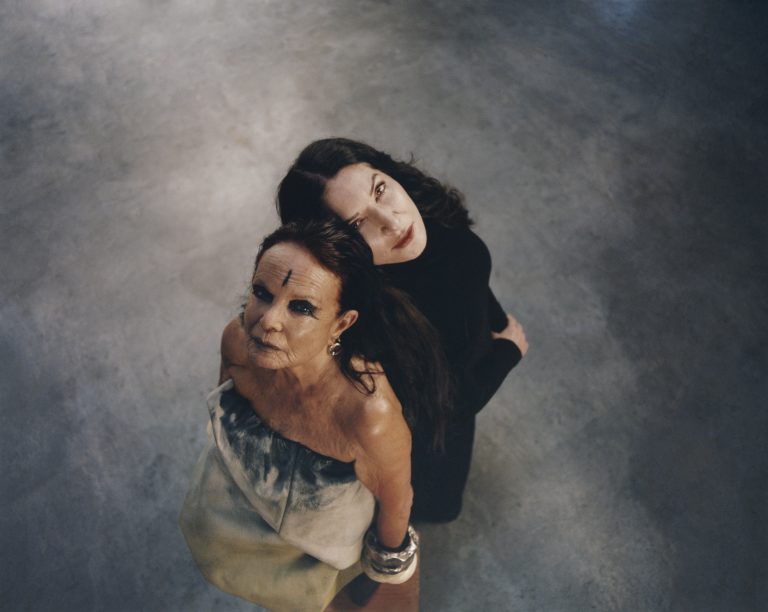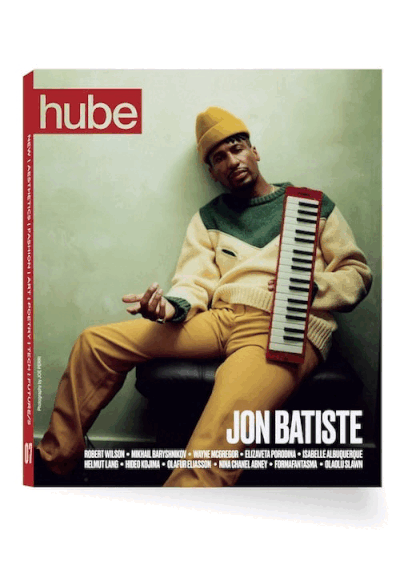Discover the dynamic between Michèle Lamy and Marina Abramović as they delve into the role of failure in creativity and push the boundaries of artistic expression. In this conversation, they explore the freedom within art, the valuable lessons learned from failure, and the profound truths conveyed through nonverbal forms of expression.
hube: Art thrives where there is freedom. Artists should not be limited or constrained by political, ethical, or social frameworks. You’re both constantly reinventing the relationship between artist and society, pushing boundaries through your work, and challenging your audiences. Can you elaborate on this? Do you believe that every artist should somehow challenge societal and ethical norms?
Michèle Lamy: The thing is, Marina is an artist, but I am not really an artist.
Marina Abramović: Oh, but my dear, you are so many other things!
ML: And that’s the thing! To me, art is a form of expression; so, in that way, we are similar. I am not sure how to answer those questions, except to say that we are both expressing ourselves. Although I’m sure you, Marina, can answer this better than me. I think that artists need to be present, like when Marina was at MoMA. I don’t think an artist should be or do anything except express themselves.
MA: This is something I really would like to speak about with you, Michèle, I’m so interested to know your thoughts. But first let me say one thing, what is really important here… for every artist, as for every human, it’s important to know where you come from and what your background is. My background is pure communism. I’m from former-Yugoslavia: with Josip Broz Tito as our president, with parents who are national heroes and a Serbian Orthodox grandmother who hated communism and spent all her time in church.
As a child, I was a mixture of all of these different things, and a particularly important part of my upbringing was not being afraid of anybody or anything. This is number one. Number two: You need to sacrifice your private life and private comfort for a higher cause. That higher cause can be anything you believe in. It can be creativity, it can be the search for new ideas, it can be science or writing. Whatever it is, you shouldn’t lose the sense of freedom. It’s very important for an artist.
Looking back at the ’60s and ’70s, that sense of freedom was so much larger than it is today. Today, everything is politically correct. You can’t do this, and you can’t do that. Everything that happened in art in that time would not be possible today. I think political correctness is really killing creativity.
In my mind, I classify people into two categories: Originals and those who are following. That’s it. Originals are not only artists. Originals are all human beings who find their own way of expressing themselves. It’s so important. They are precious, the ones who are not afraid to be themselves.
You definitely fall into this category, originals. And this is why I’m so incredibly honoured and proud to be with you in this room today. You don’t need to be an artist or to be classified as an artist. Whatever you touch or create, you’re doing something that is so special and so different. This is who you are. I’m wondering, what is your background?
ML: I’d like to tell a story about my background that, in a sense, we have in common—although I am a few years older than you. My parents met in the resistance at the end of the war. My mother was bringing food to the rebels hiding in the woods, and that’s how she met my father. I was born shortly after. For the rest of it, I have just lived life taking any opportunities.
I’m not a surfer, but I have a feeling that everything in life is like those waves; always going up and down, it’s about following the flow. For example, I did a project for Circa [Cultural Institute of Radical Arts] a while ago where I posed naked in a video, staring at people. In a way, it reminded me of what you do. It was the same look of compassion toward the world. I’m currently working on a big event in November with The Skateroom guys to raise funds to build a skatepark in a refugee camp. Essentially, I have this thing where I like to create a world inside a world, where something leads to something else.
MA: Yes, but it is not only that. You organise the best events in Paris. You connect people with other people that they would never have otherwise met, and give them the benefit of knowing each other. You have this charisma and people are drawn to you. This is huge.
ML: Yes, this is what I meant, I am not an artist like you are. You are an artist in the current sense of the word. I am more like a rhizome; people see my iconic teeth and are drawn to me. And then, as soon as I see and meet new people… I don’t know what happens, I cannot explain it. These connections are created. I’m always searching for new energy, new beginnings. I always have to be doing something.
h: The human body has been an artistic subject for centuries, and it holds a crucial role in both of your artistic practices. Do you see it as a body or a curse?
ML: I mean, we have no choice but to embrace our bodies, which is why I struggle with this question.
MA: Yeah, absolutely. We don’t have a choice. We must accept it in order to live, we have to deal with it. This is why it’s so interesting to work with the body; to this day, we still don’t know much about it.
ML: I mean we know a few things [laughs].
MA: That’s true, [laughs] but not much! This is why working with the body is a process of continuous learning.
ML: Yes, and in a sense, you are the perfect example. You “tame” your body. You work with it and, especially as a performance artist, you use it to express yourself and don’t let it limit you. In the same way that I changed my teeth and put a titanium thing in my leg to walk without a femur. We express everything and live everything with the body.
MA: Essentially, we both agree: the body is definitely a blessing! Not a curse.
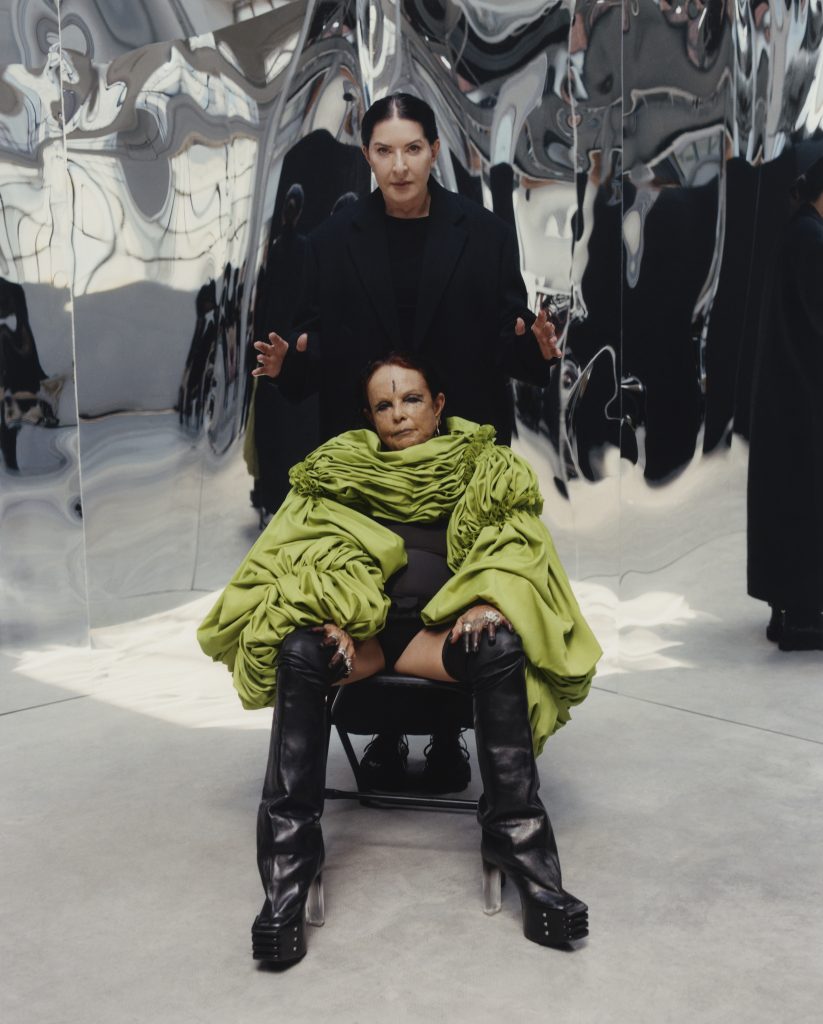
MICHÈLE: Archive top COMME DES GARÇONS, tank, shorts, and boots RICK OWENS
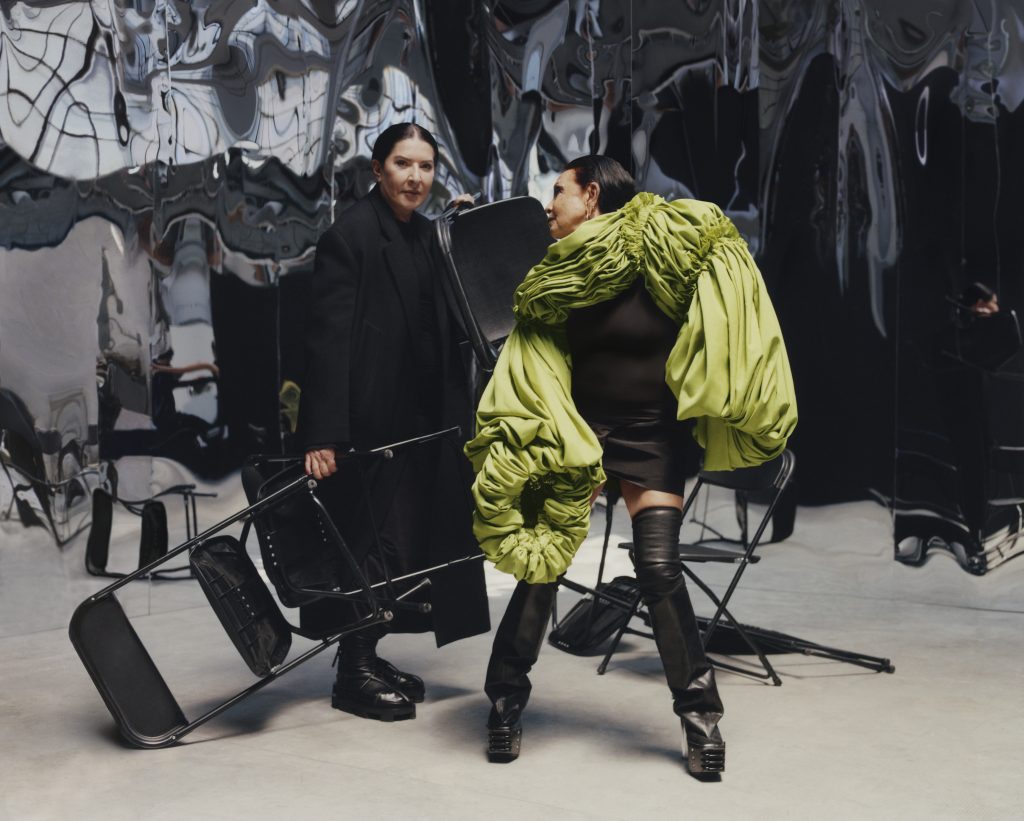
MICHÈLE: Archive top COMME DES GARÇONS, tank, shorts, and boots RICK OWENS
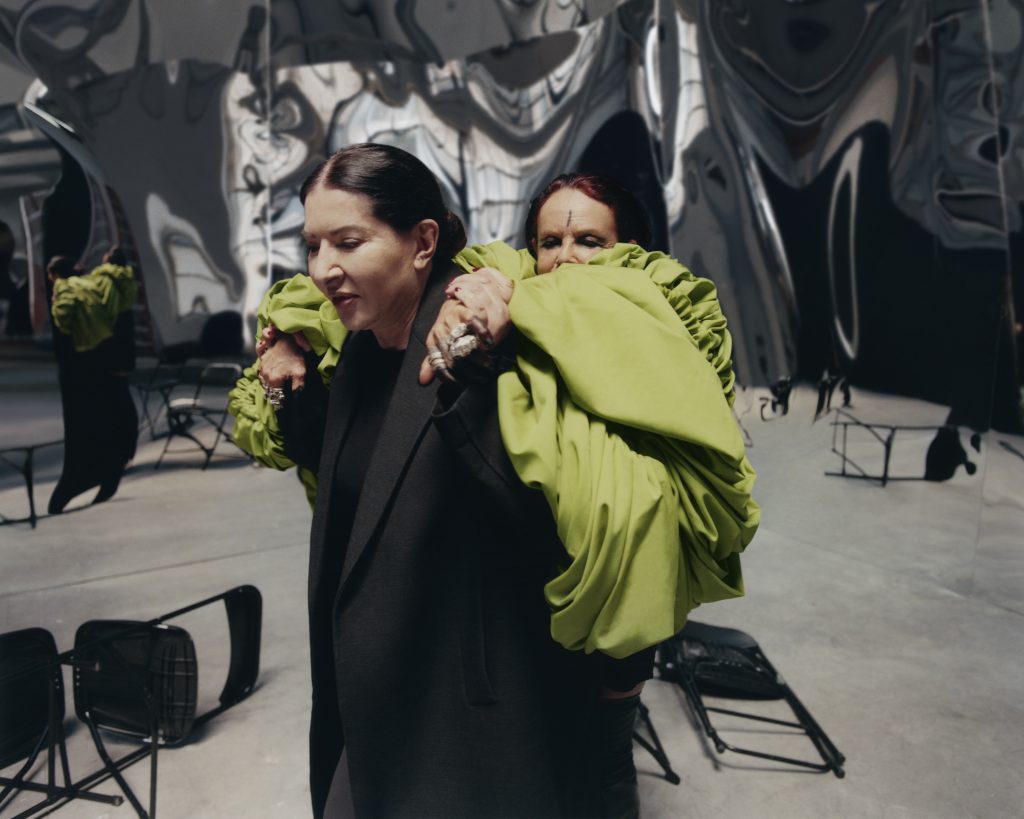
MICHÈLE: Archive top COMME DES GARÇONS, tank, shorts, and boots RICK OWENS
